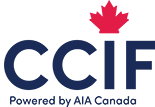There are lots of things you can control in order to get a good refinishing job. Using the right tools and techniques can help prevent refinishing defects. But some defects can be caused by environmental factors that are just as important to consider to maximize your refinishing outcome.
Temperature
Temperature can affect the materials used in refinishing in a number of ways. If it is too warm, it will speed up the flash and cure time of some materials. That can result in defects like solvent popping and dry spray.
On the other hand, if it is too cold, flash and cure times can slow down. That can result in runs and sags in the finish.
Humidity
Humidity can have a big effect on refinishing, too. Excess humidity can inhibit the evaporation of both solvent-borne and waterborne paints. This could lead to poor curing, sagging, solvent popping, and water splashing (puddling).
Water splashing happens when waterborne paint is sprayed in a high-humidity environment, caused by the first coat dimpling from the overspray of the second coat. Water splashing is also known as “puddling” because of how it looks like a rain drops hitting a puddle.
Excess humidity can cause water molecules present in the air to be trapped under the refinishing coating. This can lead to blistering and bubbling. The trapped moisture also affects a coating’s ability to cure.
It is not always easy to control the temperature and humidity in a repair facility. That means it may be necessary to keep an eye on the weather forecast and plan refinishing jobs so the right materials and techniques are used for the conditions.
Learn how to plan a refinishing job with I-CAR Canada’s “Preparing a Vehicle for Refinishing” course.
